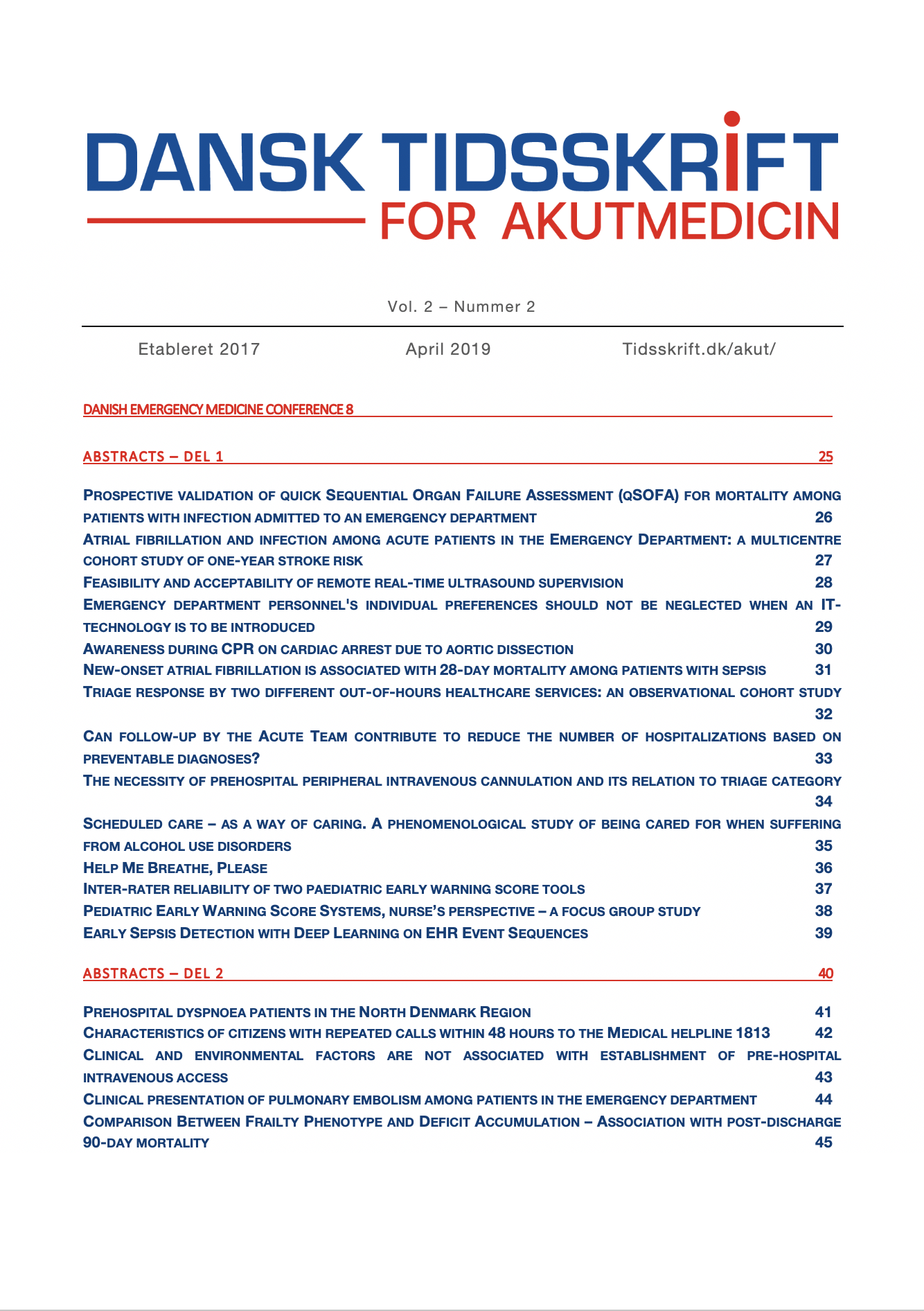Resumé
Background: Minor emergency departments (ED) struggle to access sufficient expertise to supervise learners of lung and cardiac point-of-care ultrasound (POCUS). Using tele-ultrasound (tele-US) for remote supervision may remedy this situation. We aimed to evaluate the feasibility of real-time supervision via tele-US when applied to an everyday ED clinic.
Methods: We conducted a mixed-methods study that assessed practical feasibility, determined performance, and explored users’ acceptability of supervision via tele-US. A tele-US setup was established and temporarily implemented in the emergency department of the Regional Hospital West Jutland in the Central Denmark Region. We intended to expose 10 junior doctors to five tele-supervised lung and cardiac POCUS examinations. Qualitatively, exposed doctors’ and supervisors’ acceptability were unfolded by exploratory semi-structured interviews addressing their impression, satisfaction and perceived benefits. Technical performance was assessed quantitatively by the ratio in mean grey value (MGV) between images on site and as received by the supervisor, and by after-compression frame rate; MGV and frame rate were measured on five different days with alternating on-site laptops, software and internet connection.
Results: Remote supervision via tele-US was performed with 10 junior doctors scanning 45 included patients. Qualitatively, 12 exploratory semi-structured interviews were conducted with exposed junior doctors and supervisors. Supervisors stressed the importance of preserving frame rate, and junior doctors emphasized a need for shared ultrasound terminology. Overall, setup mobility, accessibility, and time consumption were emphasized as being of key importance for future clinical implementations. During performance assessment, neither alternating internet connection nor software significantly changed the mean grey value ratio. The lowest median frame rate of 4.6 (interquartile range [IQR]: 3.1–5.0) was found by using a 4G internet connection; the highest of 28.5 (IQR: 28.5–29.0) was found with alternative computer and local area network internet connection.
Conclusions: Remote supervision via a commercially available and low-cost tele-US setup is operational for both junior doctors and supervisors when applied to lung and cardiac POCUS scans of hospitalized patients.
Licenseret under en Creative Commons Kreditering 4.0 International-licens (CC BY 4.0).
© Forfatterne.

